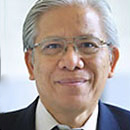Since the 1960s when Filipinos started arriving in Canada in large numbers, they had managed to become seamlessly integrated in Canadian mainstream society.
In fact, in 2012 when Canada Census revealed that Tagalog (the Philippine national language) was the fastest growing non-official language in Canada, it was news to most Canadians.
As Canada deepens its engagement with Asia after the unraveling of the North American Free Trade Agreement (NAFTA) and other trade disruptions brought about by the seemingly isolationist US Trump administration, the human connections, rather than trade, between Canada and the Philippines provide the strongest link between the two countries.
The Human Connections
The first wave of Filipino immigrants were predominantly highly-educated women who passed the qualifying board exams of their respective professions to get a license to practice in Canada. For Filipinos, an important feature of Canadian immigration has been the family reunification program. It allowed families to immigrate together and stay together and build strong family ties.
Succeeding waves of Filipino migrants included caregivers and skilled temporary foreign workers. Because the educational requirements for these types of immigrants were lower than those required for professionals, the overall average educational level of Filipino migrants dipped, although many primary migrants who arrived during that time exceeded the educational qualifications demanded by the Points System.
The admission of so many caregivers was not a purely Canadian humanitarian gesture. They were brought in to free Canadian women from housework and enable them to join the labour force. Caregivers were also recruited to meet the demands and needs for day care and health service for the elderly and sick in Canada which the government was unable to provide satisfactorily and sufficiently.
The Temporary Foreign Workers Program (TFWP) of 2002 adversely affected Filipino migration to Canada. It admitted TFWs to work in hotels, fast food chains, service industries, construction firms and farms. Problems arose. In response the government issued regulatory monitoring systems supposedly to weed out unscrupulous employers.
The increasing number of Filipinos in Canada remained unnoticed for almost five decades. When the Philippines became the primary source of recent immigrants in 2010, a CBC radio documentary observed that Filipinos had come in “under the radar.”
Studies of Canadian -Filipinos found that a major factor in their easy integration in Canadian society is their ability to speak English. They learned English when the United States colonized the Philippines in 1898 and made English the medium of instruction in all schools.
Compared with other Asians, Filipinos are fairly “globalized” and westernized in outlook having been a colony of Spain for 300 years and of the United States for 50. About 80% of Filipinos are Roman Catholics and since about 42.3% of Canadians are Catholics they rejuvenated the languishing practice of Catholicism in the country.
Filipino immigrants eventually become Canadian citizens. Many of them regularly return to the Philippines as tourists; some have even invested in condos and businesses back home. It is interesting that not many have taken out dual citizenship although the Philippines has allowed dual citizenship since 2003. Some explained that it was because their “families were already in Canada.”














